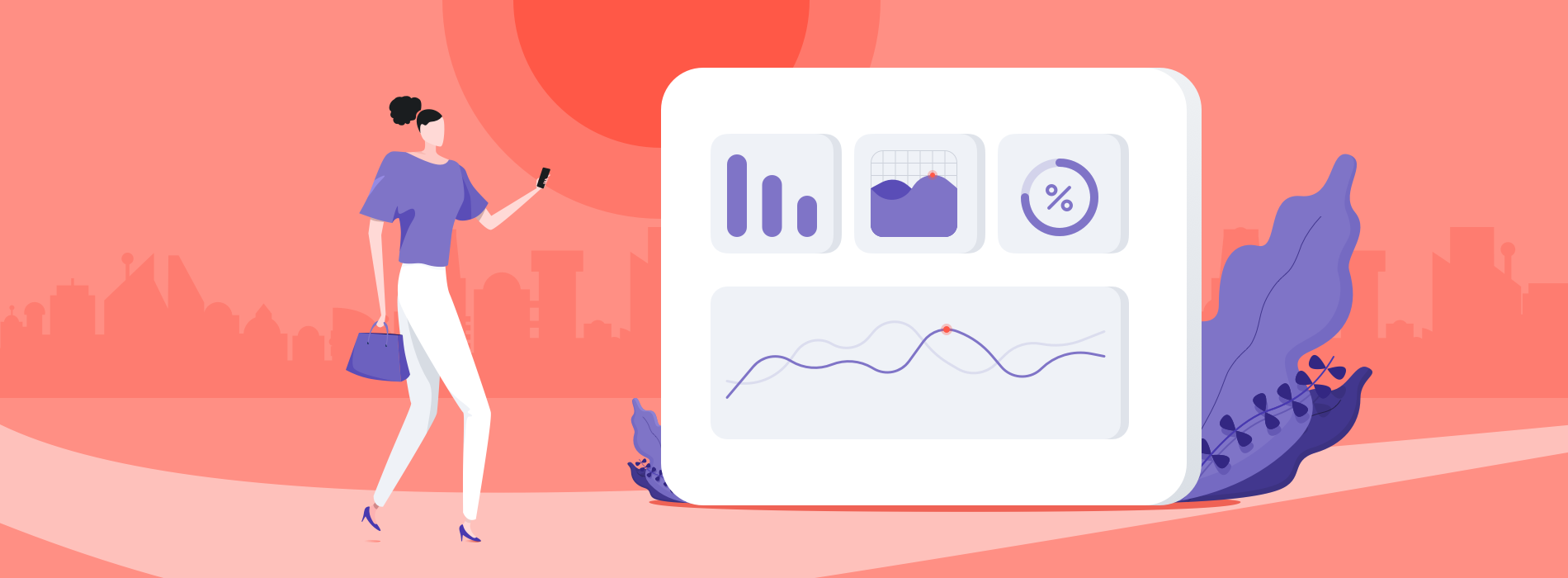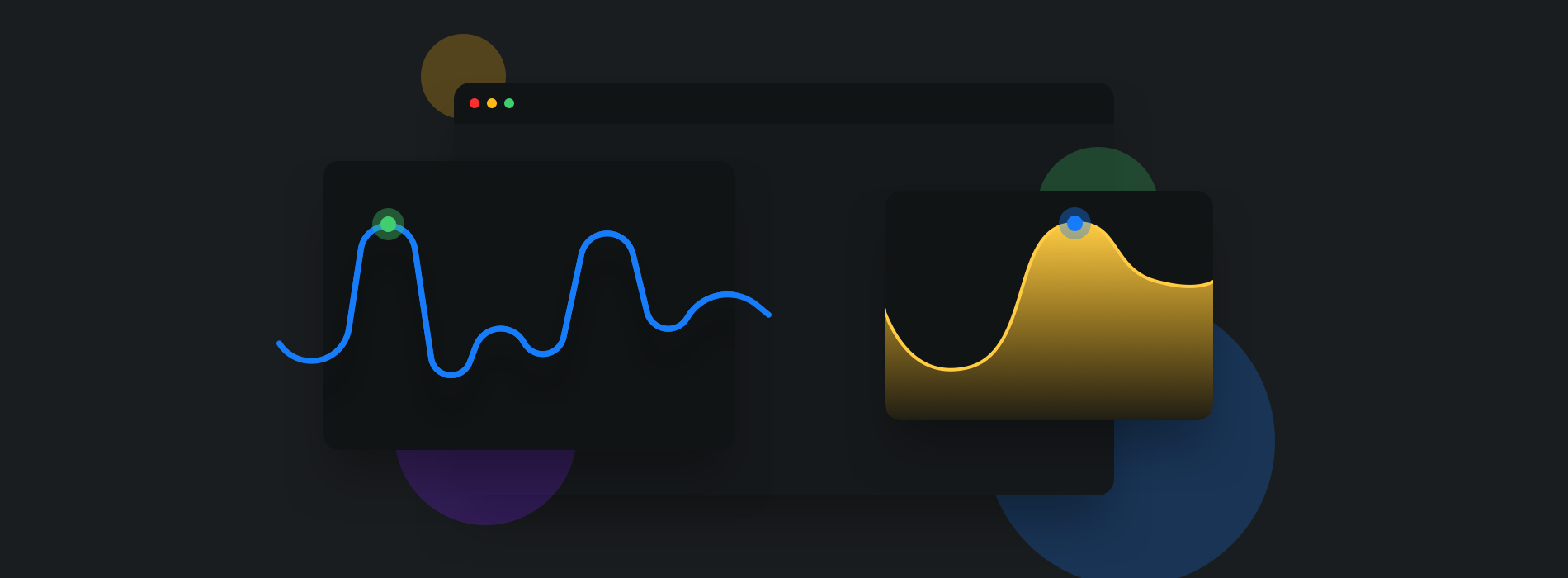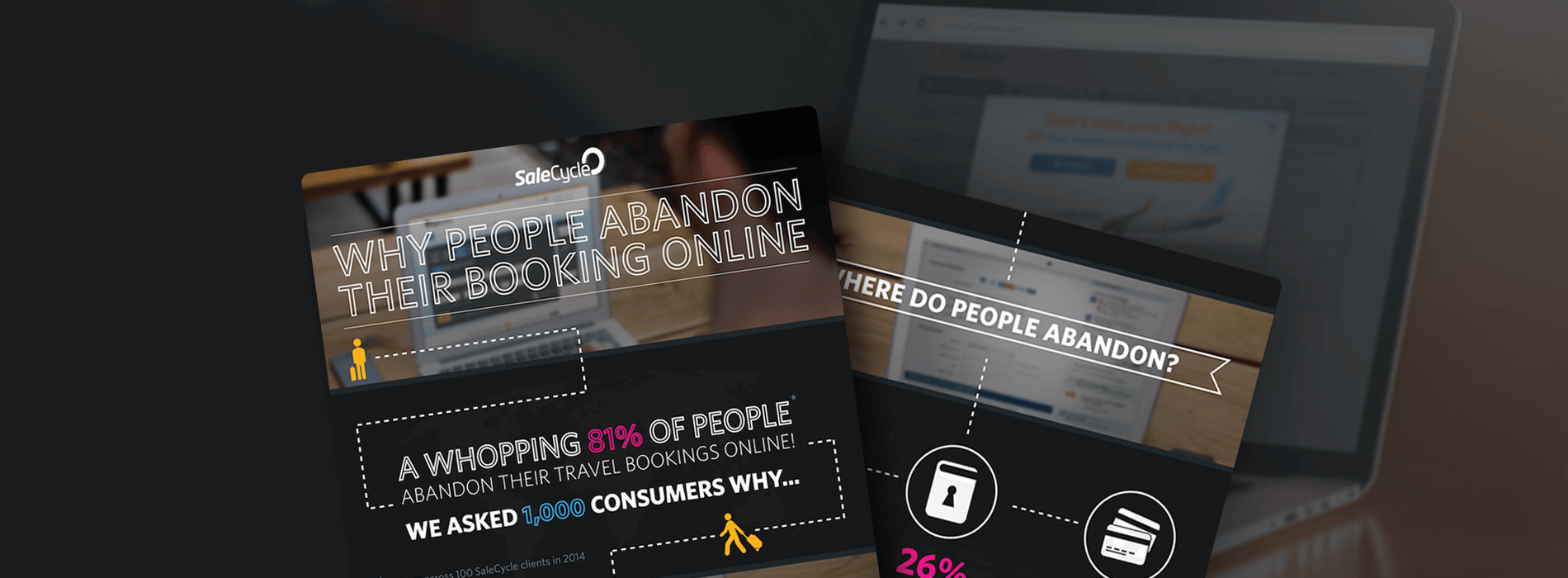With the COVID 19 pandemic ongoing in 2022, we look at how online shopping behaviour has been affected, with a look at some of our ecommerce stats and data surrounding coronavirus.
We’ll also explore how the impact of post covid ecommerce will potentially affect the online market in the coming years.
Take a look at cart abandonment rates and other metrics across several different sectors in our data from the 2022 Ecommerce Stats and Trends Report.
Below we look at a 3-year snapshot of ecommerce statistics from the start of coronavirus in 2019 onwards. Our pandemic data allows us to create a picture of ecommerce and look at online customer behaviour during the coronavirus pandemic.
It’s an unprecedented situation, and one which will continue to change in the coming weeks and months and perhaps even years.
Cart Abandonment Rates
In usual circumstances, abandonment rates are affected by factors like the length of checkout process, price of products and how long customers research purchases.
Other factors such as seasonal trends and sales and busiest retail months online can affect abandonment. For example, abandonment rates often fall during events like 11.11 and Black Friday sales as shoppers are keen to take advantage of promotions.
Lower abandonment rates can reflect increased demand for certain products or services. For example, abandonment rates in the Gardening and DIY sector are down 10% while Sports and Outdoor is down 9%.
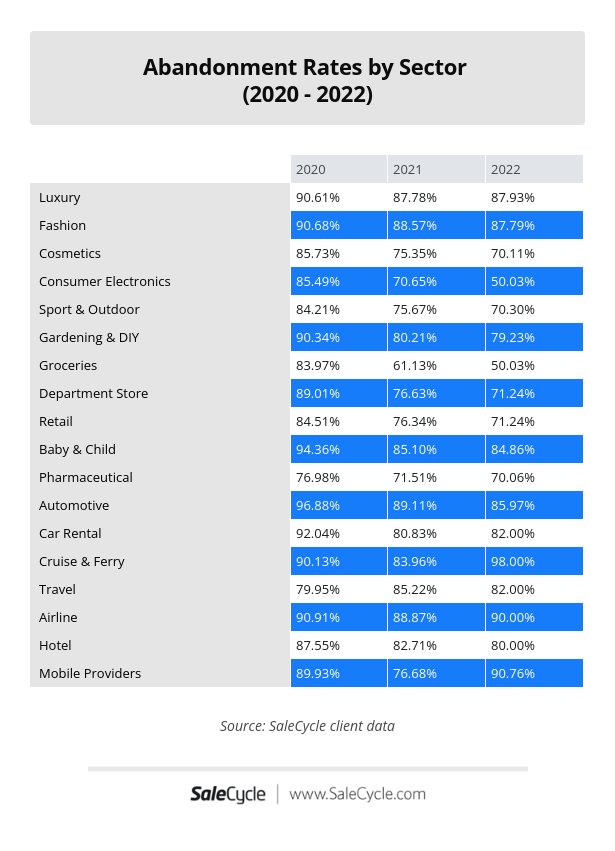

Lower abandonment rates show an increased demand for certain products or services. For example in 2021, abandonment rates in the Gardening and DIY sector were down by 10% while Sports and Outdoor was down 9%. This could have been down to the fact that more people were making use of their gardens and outdoor spaces.
We can see that from the most recent 2022 report, the abandonment rates for these sectors have continued to decrease with Gardening and DIY at 79.23% and Sports and Outdoor at 70.30%. There has perhaps been a change in consumer behaviour here, with more people enjoying the outdoors since the lockdown restrictions of the pandemic.
In other sectors, we knew that demand was up. Take Groceries for example. Ocado, a well-known online grocery brand, illustrated the demand for this sector as people looked for home delivery services.
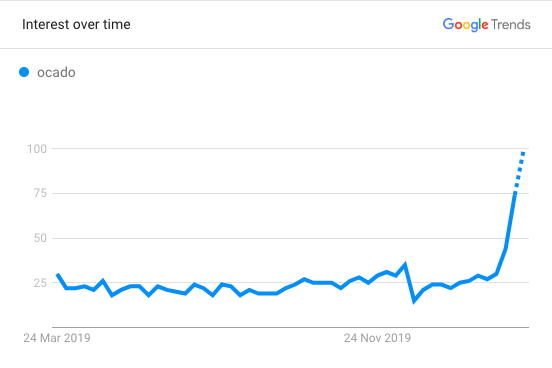

From 2020 – 2021, we saw abandonment rates drop in the Grocery sector – almost 23% less than usual compared to the beginning of 2020, when the pandemic was becoming more of a standard situation.
Panic buying and building up stocks and supplies was a practice used by many, resulting in faster decision making whilst shopping, reflecting uncertainty of the time.
However, in 2022, we notice that grocery abandonment rates have continued to decrease by over 11% from the previous year. As online shoppers become used to shopping online and have accepted this as a standard mode of shopping – abandonments have improved.
We can also assume that website traffic has slowed down with shoppers going to physical stores since restrictions began to ease.
Post-Pandemic Buying Habits
We can see from our most recent report that particular items became more significant in sales volumes, most likely due to the pandemic in previous years. Take the Fashion sector, for example.
In last year’s report, we saw that loungewear and mask sales were highly indicative of the early post-Covid lifestyle with more people spending time at home than ever before. However in this year’s stats, we can see that there has been a clear shift in these particular buying habits.
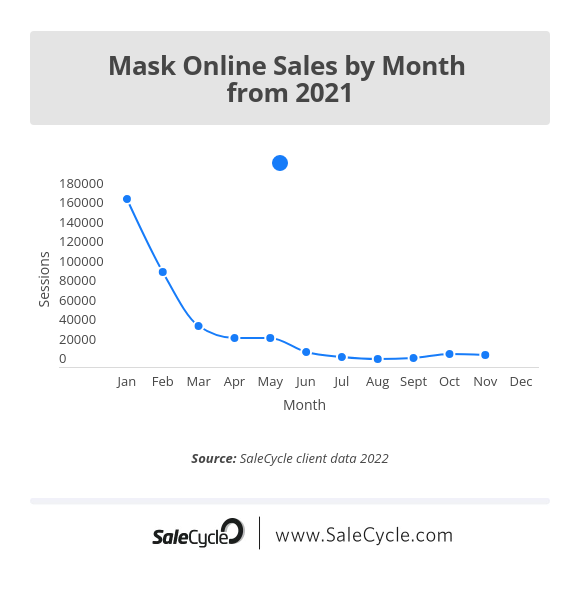

throughout the year, starting from January and declining until August. Masks pick up again slightly during the winter months (September to December), overall reflecting the end of restrictions and freedom of choice to wear a mask.
Loungewear sales stay quite stationary throughout the year, apart from a peak at the start of the year (January – April), when more people are likely to choose to work from home and/or are benefiting from January sales.
Average Order Values by Sector
Looking at average order values (AOV) by sector in 2020 compared to 2021, we saw that consumers seemed to be spending more than usual by quite a high amount.
The total average order value in the ecommerce sectors selected saw that the AOV had increased by 75% as online shoppers take to digital transactions.
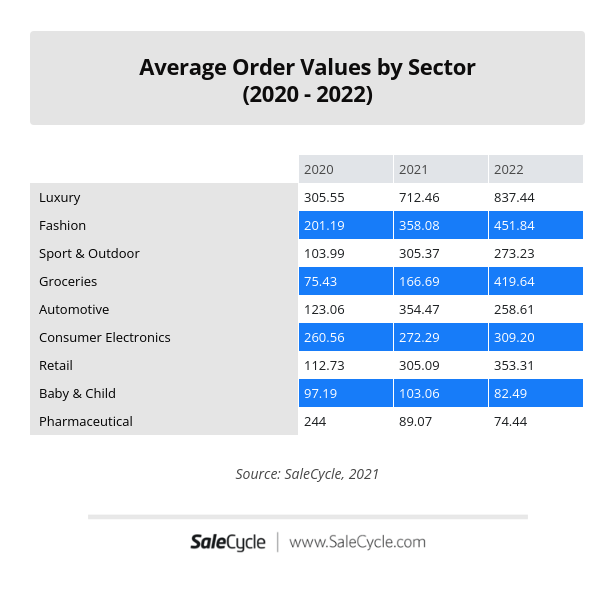

So we see grocery, sports and outdoor and general retail AOVs being much higher as people bought the products they needed in the current situation. Grocery sites are an obvious area to look for an impact, and here we saw significant increases in AOVs and online sales too.
We also saw a dramatic increase in AOVs in the Sports and Outdoor sector at 196%. Looking at Sports and Outdoor sites, we can see a big impact on average order values, which has increased almost 300% during the pandemic. We can also see that abandonments have also decreased due to the strong buying intent and necessity.
Pharmaceuticals is a sector that has seen an impact from people spending more on vitamins and health products. This is a sector that traditionally picks up in January and around winter during the cold and flu period, but demand had obviously increased given the nature of the pandemic. We can see that this number has decreased in the most recent report, perhaps with more people feeling less of a need to stock up on health goods with the lesser presence of covid 19.
In 2022, we can see from this chart that ecommerce AOVs continue to rise in many etail sectors, including fashion, consumer electronics and retail. Now that we can socialise and enjoy more activities outdoors, our purchases reflect these behaviours.
Conversions and Sales Uplift by Sector
We’ve also pulled some stats on specific sectors to show the impact of COVID-19 on certain types of site. Here we look at ecommerce trends in 3 different segments throughout the COVID-19 pandemic.
Abandonment rates in all 3 segments have improved, with groceries abandonment statistics decreasing significantly.
Grocery sites are an obvious area to look for an impact, and we can see increases in AOVs and online sales too. We can also see a dramatic increase in AOVs in the Sports and Outdoor sector at 196%.
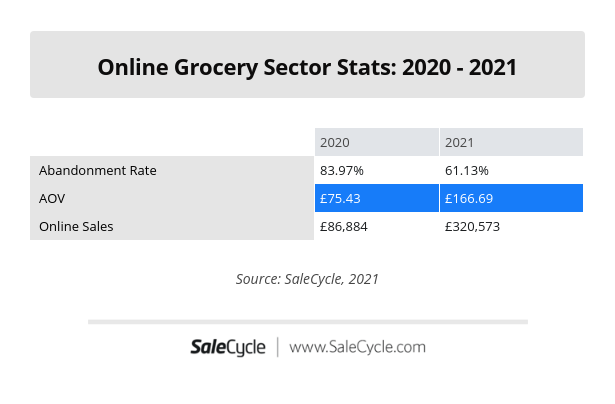

Looking at sports and outdoor sites, we can see a big impact on average order values, which has increased almost 300% during the pandemic. We can also see that abandonments have also decreased due to the strong buying intent and necessity.
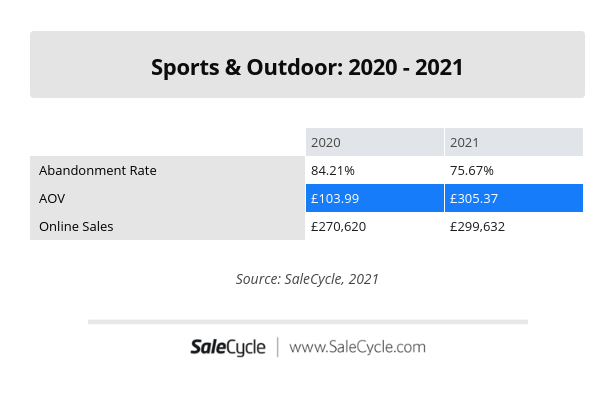

Pharmaceuticals is a sector that has already seen an impact from people spending more on vitamins and health products.
It’s a sector that traditionally picks up in January and around winter but demand has obviously increased given the nature of the pandemic.
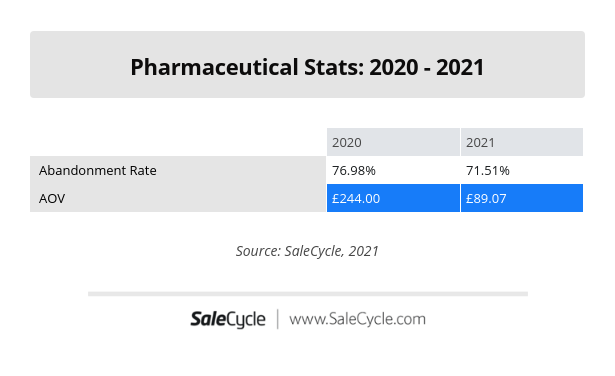

Post Covid Ecommerce Trends
The Covid 19 impact on ecommerce taught us many lessons in how to meet the demands of customers during uncertain times. Overall, cart abandonment rates have continued to improve since the pandemic in 2020, seeing a steady decline across the vast majority of ecommerce sectors.
When major retailers like John Lewis, Selfridges, Schuh and more closed stores temporarily, we saw a huge shift to online shopping in retail, which more than likely resulted in an increase in conversion rate optimisation services. Retailers faced many different challenges of the time, and needed to work hard to increase conversion rates when a major ecommerce shift was made.
Of course, there are many tactics brands can still use to increase their conversion rates both on mobile and desktop, such as optimising their ecommerce mobile form design or sending post purchase emails to retain their customers.
SaleCycle data finds 43.8% of users will view website products and 14.5% will add items to their cart, suggesting that there is clear buying intent. It’s important to tempt users back, so sending browse abandonment emails to your users could be the push your customers need. We’ve created a complete browse abandonment email marketing strategy with examples to help.
Speak to an expert
Learn how to convert your online audience into revenue with our experts.


Casey Turnbull
Casey is a Fashion Journalism graduate & ecommerce marketing executive at SaleCycle. Casey is committed to producing high quality content backed by in-depth research and data. She has experience developing content in a range of sectors including fashion, ecommerce and sports.
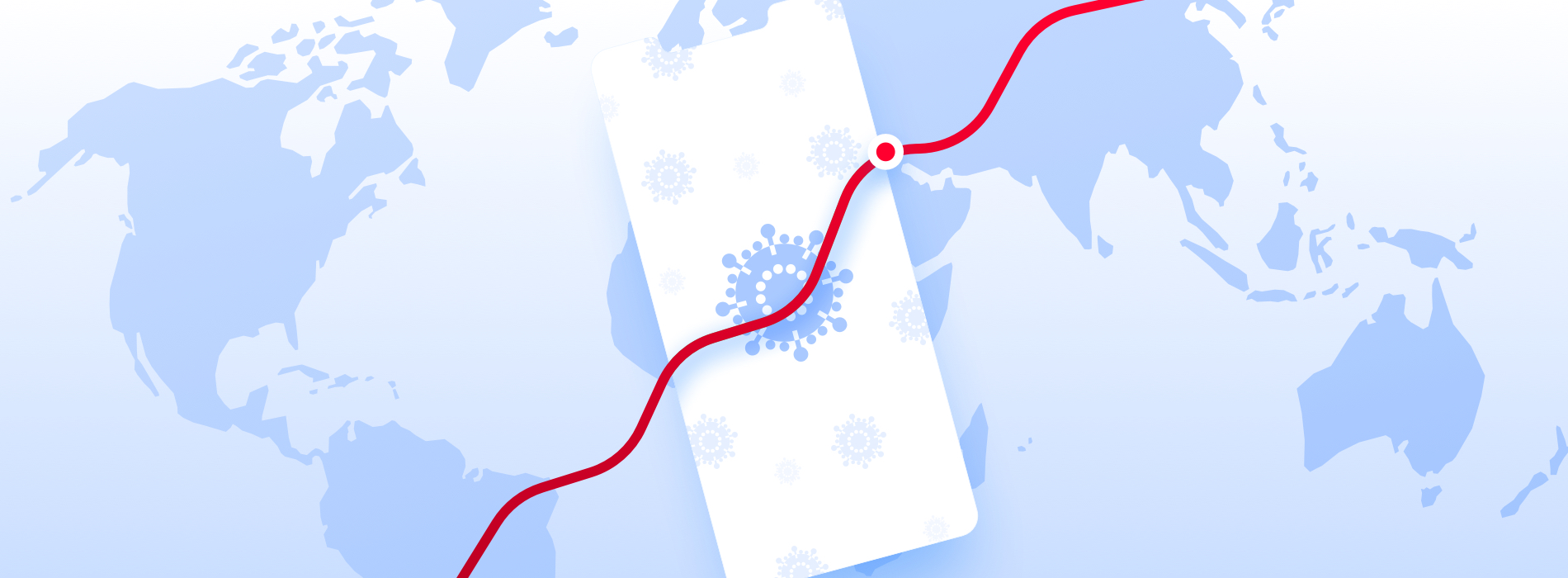






![What Is A Good Conversion Rate? [Stats By Industry]](https://www.salecycle.com/wp-content/uploads/2017/10/Why-a-Structured-Approach-to-Conversion-Rate-Optimization-Is-Crucial.jpg)
